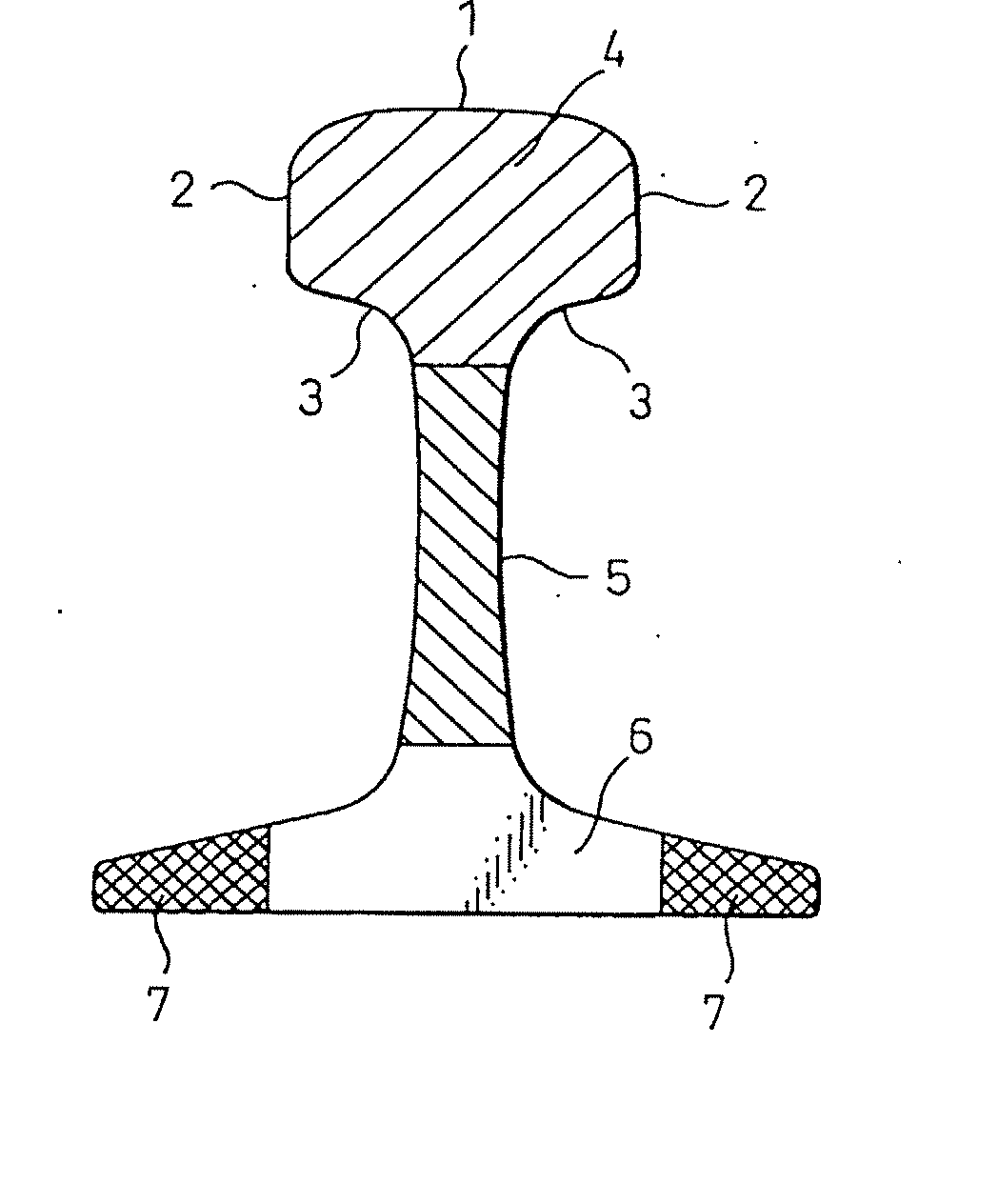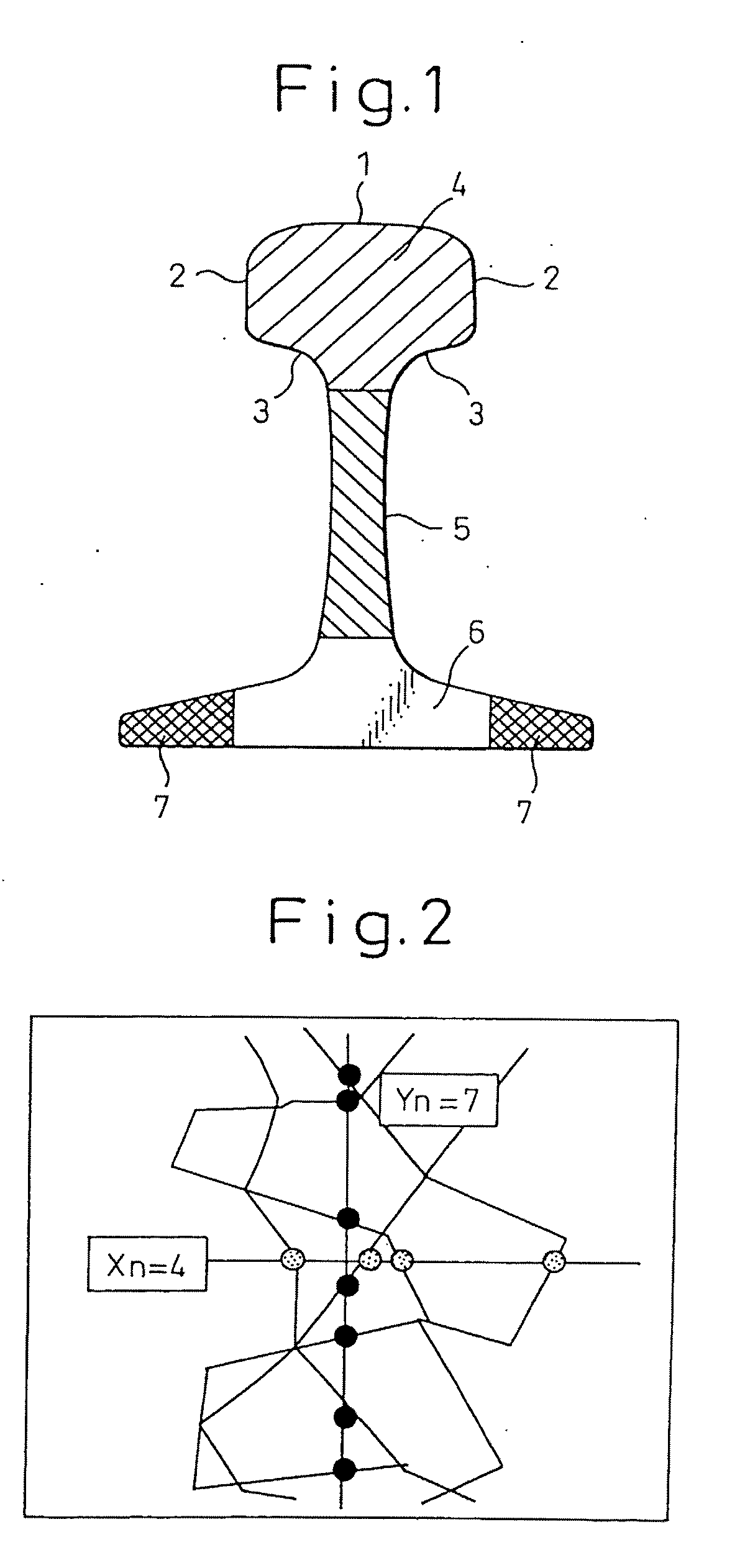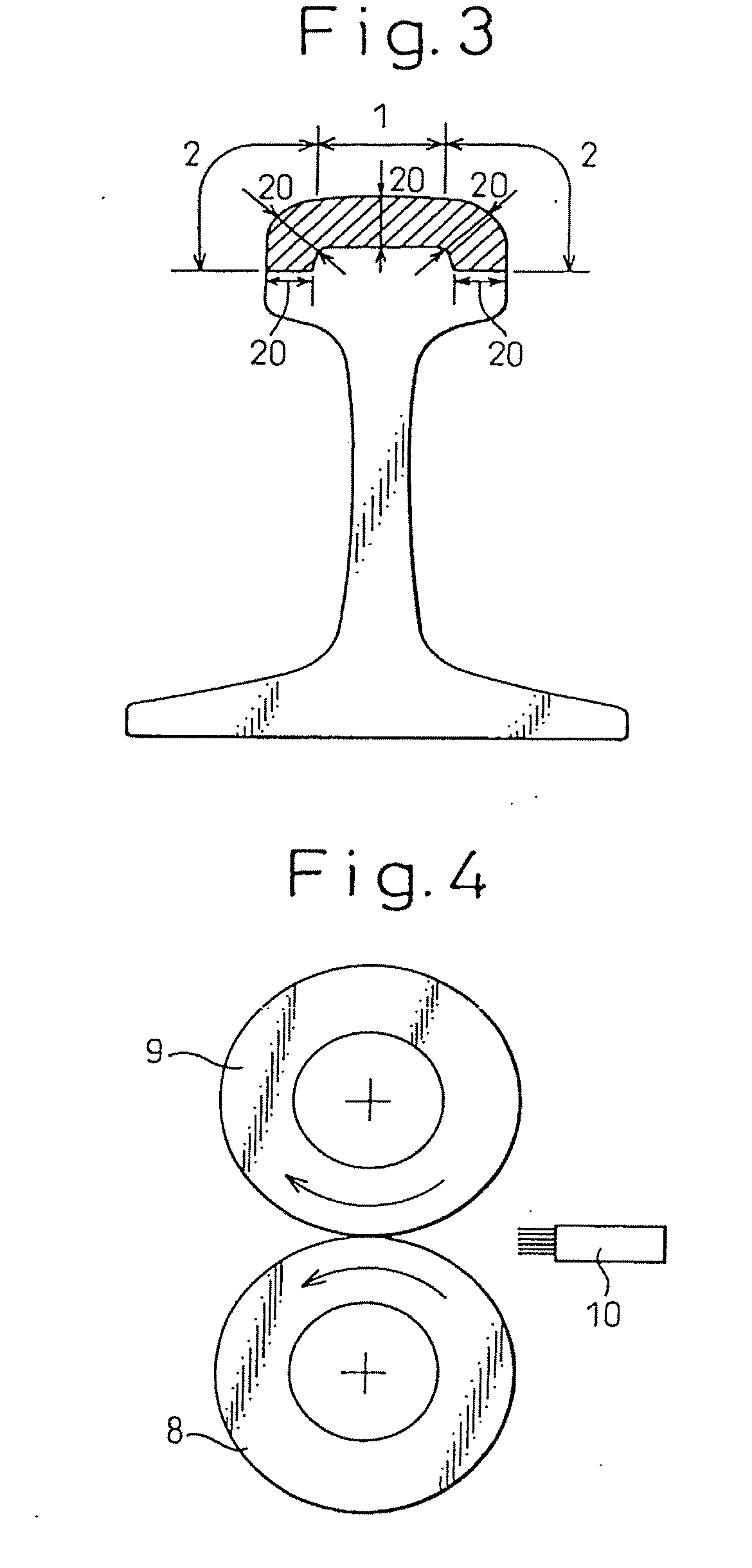Pearlitic steel rail excellent in wear resistance and ductility and method for producing same
a technology of ductility and wear resistance, applied in the field of pearlitic steel rails, can solve the problems of rail breakage, insufficient wear resistance, and increased wear at the gauge corner and the head side portions of the rail laid on a curved track, and achieve excellent wear resistance and ductility
- Summary
- Abstract
- Description
- Claims
- Application Information
AI Technical Summary
Benefits of technology
Problems solved by technology
Method used
Image
Examples
example 1
[0232] Table 1 shows, regarding each of the steel rails according to the present invention, chemical composition, hot rolling and heat treatment conditions, the microstructure of a head portion at a depth of 5 mm from the surface thereof, the number and the measurement position of pearlite blocks having grain sizes in the range from 1 to 15 μm, and the hardness of a head portion at a depth of 5 mm from the surface thereof. Table 1 also shows the amount of wear of the material at a head portion after 700,000 repetition cycles of Nishihara wear test are imposed under the condition of forced cooling as shown in FIG. 4, and the result of tensile test at a head portion. In FIG. 4, reference numeral 8 indicates a rail test piece, 9 a counterpart wheel piece, and 10 a cooling nozzle.
[0233] Table 2 shows, regarding each of the comparative steel rails, chemical composition, hot rolling and heat treatment conditions, the microstructure of a head portion at a depth of 5 mm from the surface th...
example 2
[0264] Table 3 shows, regarding each of the steel rails according to the present invention, chemical composition, hot rolling and heat treatment conditions, the microstructure of a head portion at a depth of 5 mm from the surface thereof, the number and the measurement position of pearlite blocks having grain sizes in the range from 1 to 15 μm, and the hardness of a head portion at a depth of 5 mm from the surface thereof. Table 3 also shows the amount of wear of the material at a head portion after 700,000 repetition cycles of Nishihara wear test are imposed under the condition of forced cooling as shown in FIG. 4, and the result of tensile test at a head portion.
[0265] Table 4 shows, regarding each of the comparative steel rails, chemical composition, hot rolling and heat treatment conditions, the microstructure of a head portion at a depth of 5 mm from the surface thereof, the number and the measurement position of pearlite blocks having grain sizes in the range from 1 to 15 μm,...
example 3
[0281] The same tests as in Examples 1 and 2 were carried out using the steel rails of Example 2 shown in Table 3 and changing the time period from the end of rolling to the beginning of accelerated cooling and the hot rolling conditions as shown in Table 6.
[0282] As is clear from Table 6, total elongation was further improved in the cases where the time periods from the end of rolling to the beginning of accelerated cooling were not longer than 200 sec., 2 or more passes of the finish hot rolling were applied, and the times between rolling passes were not longer than 10 sec.
TABLE 6Time fromend of hotrolling toRailbeginningHot rolling conditionslengthof3Time2TimeTimeRollingClassificationat hotacceleratedpassesbetweenpassesbetween1 passbetweenendofrollingcoolingtopassestopassestopassesFinaltemperaturerailSymbolSteel(m)(sec)final %secfinal %secfinal %secpass %° C.Invented5523198198—6980rail5629155158—89805729155158—98705829155158—2062199805931165156—89606032165135888310980613316515...
PUM
| Property | Measurement | Unit |
|---|---|---|
| temperature | aaaaa | aaaaa |
| temperature | aaaaa | aaaaa |
| grain sizes | aaaaa | aaaaa |
Abstract
Description
Claims
Application Information
 Login to View More
Login to View More - R&D
- Intellectual Property
- Life Sciences
- Materials
- Tech Scout
- Unparalleled Data Quality
- Higher Quality Content
- 60% Fewer Hallucinations
Browse by: Latest US Patents, China's latest patents, Technical Efficacy Thesaurus, Application Domain, Technology Topic, Popular Technical Reports.
© 2025 PatSnap. All rights reserved.Legal|Privacy policy|Modern Slavery Act Transparency Statement|Sitemap|About US| Contact US: help@patsnap.com



